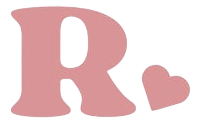
What is dry brushing?
Dry brushing is a type of Ayurvedic medicine that has been around for centuries. It’s believed to have many health benefits. Some of the benefits may include:
- stimulating the lymphatic system
- exfoliating the skin
- helping the body rid itself of toxins
- increasing circulation and energy
- exfoliation
- helping to break down cellulite
Dry brushing works by exfoliating the skin. Practitioners of dry brushing rub a brush with coarse bristles over their bodies in a particular pattern.
The idea is that the coarse bristles will help to remove dead skin and improve the skin’s ability to eliminate toxins through the pores.

Benefits of dry brushing
Dry brushing may help your body release toxins. It may also help you relax.
The possible benefits of dry brushing are as follows:-
Lymphatic system and the removal of toxins
The lymphatic system helps your body fight off infections. Fluids flow through the system and are filtered through the lymph nodes. If you’re sick or exposed to a lot of toxins, the system may become backed up and clogged. That is why your lymph nodes often become swollen when you have a cold.
Dry brushing is thought to help the body release toxins through sweat. The course bristles on the brush stimulate the pores and open them up. This makes it easier for the body to sweat, which in turns reduces the amount of toxins flowing through the lymphatic system.
Exfoliation
The coarse bristles can brush away dry, dead cells from the skin. This can leave your skin more smooth and soft.
Relaxation
Similar to a massage, dry brushing may make you feel relaxed. To make the most of this benefit, practice dry brushing in a dark, quiet space.
Cellulite
Cellulite is a condition that mostly affects women. Areas affected by cellulite have a rippled or “cottage cheese” appearance and the cause usually is not fully known. Some claim that dry brushing can reduce the appearance of cellulite because it has similar effects on the body as massage.
How to practice dry brushing
- Start at your feet and move up your body.
- Brush your skin using wide, circular, clockwise motions.
- Use light pressure in areas where your skin is thin and harder pressure on thicker skin, like the soles of your feet.
- Brush your arms after you have brushed your feet, legs, and mid-section. You should brush upward towards your armpits.
- After dry brushing, take a cool shower to help remove the dry skin.
- After your shower, dry off and then consider adding natural plant oil, such as olive or coconut oil, to moisturize your skin.
When you first start dry brushing, it’s best to begin with light brushing. As you get used to it, you can increase the pressure.
Avoid sensitive areas and anywhere the skin is broken. These include areas with:
- rashes
- wounds
- cuts
- infections
Also, never brush an area affected by poison oak, poison ivy, or psoriasis. Don’t dry brush your face unless you’re using a softer brush made for that purpose.
